Universities Australia has signed a deal with China that will encourage research collaboration and student exchanges between the two countries.
Please login below to view content or subscribe now.
Membership Login

Universities Australia has signed a deal with China that will encourage research collaboration and student exchanges between the two countries.
Please login below to view content or subscribe now.
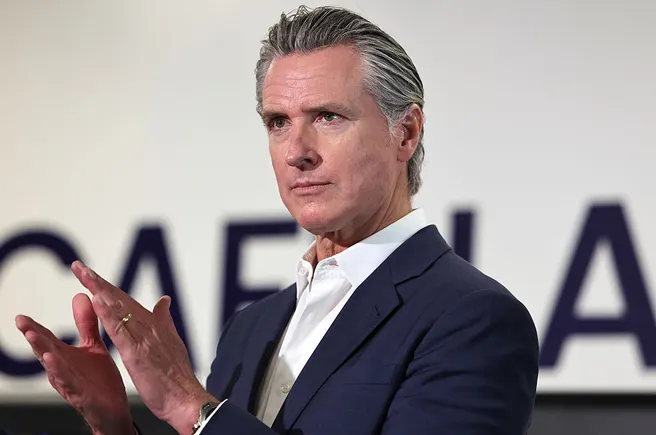
California’s new legislation, called SB 640, aims to boost college access and help reverse enrollment declines at some of Cal State’s 23 campuses.
A September news release from Cabaldon’s office noted two campuses with the biggest declines were in his district: CSU Maritime Academy — which recently merged with Cal Poly San Luis Obispo — and Sonoma State University, which announced deep budget and program cuts at the beginning of this year.
“Direct admission removes the applications hurdle that stops some students from going to college, and relieves the fear that they won’t get in anywhere,” Cabaldon said after SB 640 cleared California’s Legislature last month.
The lawmaker cited a 2022 academic study of Idaho’s direct admissions program, implemented in 2015, that found the initiative increased first-time undergraduate enrollments by 4% to 8% — an average increase of 50 to 100 students per campus. It also boosted in-state enrollment levels by approximately 8% to 15%, the study found.
Enrollment gains from the direct admissions program were concentrated mainly in community colleges, though it had “minimal-to-no impacts” on the enrollment of Pell Grant-eligible students, according to the study. At the time of publication, one of the researchers noted the lack of change was not surprising, given that the program did not focus on any particular student group.
Meanwhile, a 2023 study of 33,000 students found a Common App direct admissions initiative geared toward marginalized student groups increased applications among Black, Latinx, multiracial, first-generation and low-income students.
California joins a growing number of states incorporating direct admissions into the acceptance process for their public colleges. That list includes North Carolina, which this year offered 62,000 public high school students admissions into one of dozens of institutions through the NC College Connect Program, an expansion of a pilot launched last year.
“The process of applying to college, transferring between institutions, and navigating the maze of financial aid feels like an insurmountable series of hurdles,” Shun Robertson, the University of North Carolina’s senior vice president for strategy and policy, told Higher Ed Dive earlier this fall. “Eliminating these barriers has been a high priority.”
Institutions in Minnesota, Wisconsin, Hawai’i, Connecticut, Illinois, Indiana, Utah and West Virginia also offer direct admissions programs.
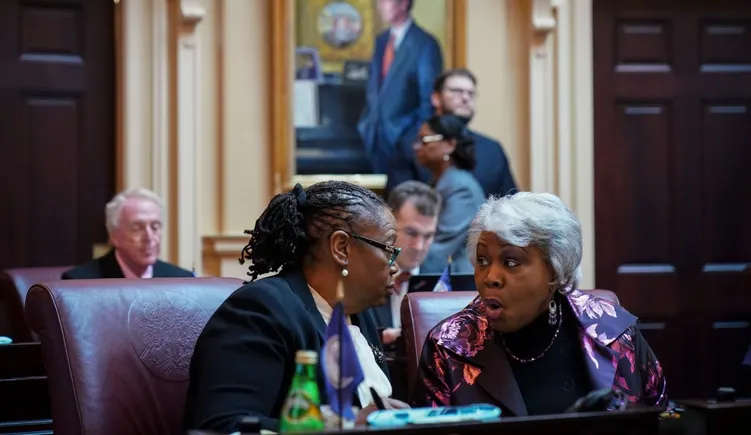
The Trump administration’s compact would offer UVA, along with eight other research universities, preferential access to federal research funding if they agree to its wide-ranging and unprecedented conditions.
Some of those terms are straightforward, such as a five-year tuition freeze, a standardized testing requirement for admissions and a 15% cap on international students’ share of undergraduate enrollment.
Others are less clear cut, including required public audits of the viewpoints of employees and students, institutional neutrality on most political and social events, and a commitment to changing — or ending — institutional units that purposefully “punish” or “belittle” conservative ideas.
All of the proposed conditions of the agreement “are fundamentally incompatible with the mission and values of a premier public research university,” the lawmakers told UVA Interim President Paul Mahoney and Rachel Sheridan, head of the institution’s governing board.
For instance, the state senators raised alarms about one element of the compact that would bar signatories with large endowments from charging tuition for students enrolled in “hard science programs.”
That would force students in humanities and social sciences “to subsidize” those enrolled in STEM programs, representing “a bizarre federal intrusion into institutional financial planning that devalues essential fields of study,” they wrote.
“This is not a partnership,” the lawmakers said. “It is, as other university leaders have aptly described, political extortion.”
Surovell, Lucas and Locke wield significant legislative power as the state Senate majority leader, president pro tempore and chair of the Senate Democratic Caucus, respectively. They underlined this influence in their letter, vowing “to ensure that the Commonwealth does not subsidize an institution that has ceded its independence to federal political control.”
The three senators pointed specifically to the forced departure of former UVA President Jim Ryan, who abruptly resigned in June amid federal pressure to step down over the university’s diversity efforts during his seven-year tenure.
In his announcement, Ryan said he wouldn’t fight back against the Trump administration and attempt to keep his job because staying would cost UVA research funding and student aid and hurt its international students.
Federal officials ousted Ryan, the state senators said, “not for any failure of leadership, but because they disagreed with the University’s approach to diversity and inclusion.” They categorized Ryan as a successful leader who was made into a political sacrifice — one that didn’t stave off further interference.
“President Ryan’s resignation was meant to spare the University from federal retaliation, yet here we are again, facing even more aggressive demands on institutional autonomy,” they told UVA leaders. “The lesson is unmistakable — appeasing this Administration only emboldens further encroachment.”
UVA faculty similarly called for institutional leaders to rebuke the compact. In a 60-2 vote, the university’s faculty senate approved a resolution on Oct. 3 whose preamble called the proposal dangerous to UVA and a likely violation of state and federal law.
The Trump administration gave the nine universities until Oct. 20 to offer feedback on the compact and until Nov. 21 to sign the agreement.

Florida State College at Jacksonville has signed an agreement with U.S. Immigration and Customs Enforcement to allow its campus police department to enforce immigration laws.
An ICE database shows the agreement is still pending.
FSCJ joins more than a dozen other public institutions in Florida that struck similar agreements with ICE earlier this year, part of the state’s crackdown on immigration under Republican governor Ron DeSantis.
While police agencies in a number of other states have signed on to participate in the federal government’s immigration enforcement actions, the only campus police forces to join the effort are located in Florida, according to an ICE database that lists partners that have finalized agreements with the federal agency.
College officials previously told the local news outlet Jax Today that they were under the impression that FSCJ’s police department was too small to be considered for an agreement with ICE. However, spokesperson Jill Johnson told Inside Higher Ed by email that is not the case.
“Initially we thought that our police department was not large enough,” Johnson wrote. “This changed last week when we were notified that our officers were in fact eligible to go through the federal training necessary to be able to work with ICE officials, should the need arise.”

Missouri has passed a law protecting the right of students to gather and speak on campuses across the state. On Wednesday, Missouri Gov. Mike Kehoe signed into law SB 160, which defends the freedom of student organizations to set leadership and membership requirements that are consistent with their beliefs.
Although the bill was later amended to include provisions unrelated to the student organization protections for which we advocated, the final law still marks a meaningful victory for students at Missouri’s public colleges and universities.
The First Amendment guarantees the right to freely associate with others who share their beliefs — or not associate with those who don’t. FIRE has consistently opposed policies that force student groups to eliminate belief-based membership rules to gain official college recognition. As we said in March when Utah signed similar protections into law, it makes little sense, for example, “to force a Muslim student group to let atheists become voting members or for an environmentalist student group that raises awareness about the threats of climate change to allow climate change skeptics to hold office.”
In a letter to Missouri’s legislature supporting SB 160, we explained that the right to associate freely extends to students at public universities and to the student organizations they form. The Supreme Court agrees, and has repeatedly upheld this principle, affirming in Healy v. James that public colleges cannot deny official recognition to student organizations solely based on their beliefs or associations. Similarly, in Widmar v. Vincent, the Court ruled that a public university violated the First Amendment by denying a religious student group access to campus facilities because of its religious beliefs.
However, the Court’s decision in Christian Legal Society v. Martinez upheld the constitutionality of “all-comers” policies — requiring student organizations to accept any student as a member or leader, even those who oppose the group’s core beliefs. But the ruling applies only when such policies are enforced uniformly. In practice, universities often apply these policies selectively. For example, some religious organizations have been forced to accept members and leaders who do not share their faith, while secular groups have been allowed to set their own membership and leadership requirements without administrative intervention.
This selective enforcement results in viewpoint discrimination. SB 160 is meant to correct that imbalance. It states that schools cannot take any action against a student association or potential student association:
(a) Because such association is political, ideological, or religious;
(b) On the basis of such association’s viewpoint or expression of the viewpoint by the association or the association’s members; or
(c) Based on such association’s requirement that the association’s leaders be committed to furthering the association’s mission or that the association’s leaders adhere to the association’s sincerely held beliefs, practice requirements, or standards of conduct.
With the enactment of this bill, Missouri joins a growing number of states strengthening protections for the First Amendment rights of student organizations on campus.
FIRE thanks Missouri lawmakers and Gov. Kehoe for affirming that students don’t shed their constitutional rights at the campus gates.
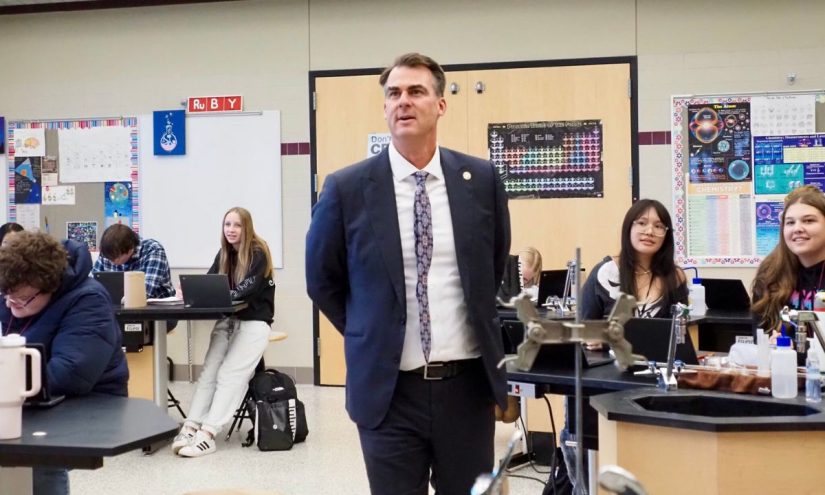
Get stories like this delivered straight to your inbox. Sign up for The 74 Newsletter
OKLAHOMA CITY — Gov. Kevin Stitt has signed into law a yearlong ban on student cellphone use in all Oklahoma public schools.
Oklahoma will join 11 other states that have implemented similar statewide restrictions. Some school districts in the state enforce a similar policy already.
Stitt signed Senate Bill 139 on Monday to implement the “bell to bell” ban for the 2025-26 school year. The restriction becomes optional for districts in the 2026-27 school year and thereafter.
While the yearlong ban is in place, each district’s school board must adopt a policy restricting students from using cellphones, laptops, tablets, smart watches, smart headphones and smart glasses from the first bell ringing in the instructional day until final dismissal. The policy must outline disciplinary procedures for enforcing the rule.
School-issued or school-approved devices used for classroom instruction are still allowed under the law. Districts could permit cellphone use for emergencies and for students who need it to monitor a health issue.
Stitt previously urged public schools to find cost-neutral ways to make classrooms cellphone free to reverse a “worrying trend” of distraction, bullying and learning difficulties.
“We’re seeing classrooms across the country struggle with the influx of cellphone use by students,” Stitt said in a statement Tuesday. “That’s why I issued my cellphone free school challenge in the fall. We want kids to be focused and present while they’re with their teachers, and this legislation helps promote an environment conducive to learning.”
Before the 2025 legislative session began, state lawmakers met with mental health researchers who warned about the negative effect and addictive impact of digital media on youth. They also spoke with Oklahoma educators who said their schools saw better student behavior after banning cellphones.
Meanwhile, Stitt visited schools that already have these restrictions in place, where students and educators spoke favorably about their school rules.
Among the nation’s largest teachers union, 90% of members said they support cellphone restrictions during class time, and 83% favored prohibiting cellphone and personal device usage for the entire school day, according to a National Education Association survey.
U.S. adults reported broad support for classroom cellphone restrictions in middle and high schools, but only a third of American adults said they support extending these bans for the whole school day, the Pew Research Center found.
Support for SB 139 wasn’t overwhelming among Oklahoma lawmakers, either. The state Senate passed the bill with a 30-15 vote, and the House approved it 51-39.
The House also passed a similar school cellphone ban, House Bill 1276, that would allow districts to opt out of the policy. SB 139 allows no such option until after a year.
“This will allow teachers to focus entirely on educating our kids while students can concentrate on learning as much as possible,” an author of both bills, Sen. Ally Seifried, R-Claremore, said. “After two years of hard work on this issue, I’m thrilled to see this legislation become law, and I’m confident students, parents and teachers will see immediate benefits once the new school year begins.”
HB 1276 is unlikely to advance in the Senate now that SB 139 has the governor’s signature, Seifried said.
The bill’s House author, Rep. Chad Caldwell, R-Enid, called the measure a “try it before you buy it type of policy.”
“I appreciate Gov. Stitt signing SB 139 to remove the distractions of cellphones from our schools and give our kids their childhood back,” Caldwell said Tuesday.
The governor on Monday also signed into law a restriction on virtual school days. Senate Bill 758 will limit districts to using a maximum of two online instruction days per school year.
“Kids learn best in the classroom,” said Sen. Kristen Thompson, R-Edmond, who wrote the bill. “Virtual days have their place in emergencies, but we’ve seen them become a go-to solution in some districts — and that’s not fair to students or families. This bill strikes the right balance by preserving flexibility without compromising the quality of education.”
Oklahoma Voice is part of States Newsroom, a nonprofit news network supported by grants and a coalition of donors as a 501c(3) public charity. Oklahoma Voice maintains editorial independence. Contact Editor Janelle Stecklein for questions: [email protected].
Get stories like these delivered straight to your inbox. Sign up for The 74 Newsletter

The University of Florida has signed an agreement to partner with U.S. Immigration and Customs Enforcement to help crack down on undocumented students, according to The Independent Florida Alligator, a student publication.
The Florida Phoenix confirmed the report with a UF spokesperson, who said the university had agreed to deputize campus police as immigration officers but did not provide more details.
The news broke the day after UF students held a rally on campus to protest the arrest and self-deportation of a Colombian student whom ICE agents stopped in late March for driving with an expired registration.
UF is not the first institution in the state to commit to working with ICE; Florida Atlantic University signed a similar agreement earlier this month.

This story was originally published by Chalkbeat. Sign up for their newsletters at ckbe.at/newsletters.
President Donald Trump has signed a much anticipated executive order that he said is designed to close the U.S. Department of Education.
The order Trump signed Thursday tells Education Secretary Linda McMahon to “take all necessary steps to facilitate the closure of the Department of Education and return authority over education to the States and local communities” to the “maximum extent appropriate and permitted by law.” At the same time, the order says McMahon should ensure “the effective and uninterrupted delivery of services, programs, and benefits on which Americans rely.”
Despite polling to the contrary, Trump said in his speech Thursday that closing the department is a popular idea that would save money and help American students catch up to other countries. He also said his order would ensure that other federal agencies take over major programs now housed at the Education Department, like those for students from low-income backgrounds and students with disabilities.
“Beyond these core necessities, my administration will take all lawful steps to shut down the department,” Trump said. “We’re going to shut it down, and shut it down as quickly as possible. It’s doing us no good. We want to return our students to the states.”
The executive order represents a symbolic achievement for Trump, who for years has expressed a desire to close the department. Yet the president has already radically transformed the department without relying on such an order. McMahon announced massive layoffs and buyouts earlier this month that cut the department’s staff nearly in half.
Beyond the rhetoric, it’s unclear how exactly the order will impact the department’s work or existence.
By law, only Congress can eliminate a cabinet-level agency authorized by Congress; White House Press Secretary Karoline Leavitt seemed to acknowledge as much Thursday before Trump signed the order, when she said that the Education Department will become “much smaller.” And during his Thursday remarks, Trump expressed hopes that Democrats as well as Republicans would be “voting” for the department’s closure, although prominent Democratic lawmakers have blasted the idea.
The order does not directly change the department’s annual budget from Congress. And federal law dictates many of the Education Department’s main functions–changing those would require congressional approval that could be very hard to secure.
Still, Trump’s move to dramatically slash the department’s staff could impact its capacity and productivity, even if officially its functions remain in place.
At her confirmation hearing, McMahon promised to work with Congress on a reorganization plan. Project 2025, a prominent blueprint for conservative governance from the Heritage Foundation released before Trump’s second term, says that along with closing the Education Department, the federal government should move the department’s education civil rights enforcement to the Department of Justice, while the collection of education data should move to the U.S. Census Bureau.
In a statement on Thursday, McMahon said closing the Education Department does not mean cutting off funds from those who depend on them.
“We will continue to support K-12 students, students with special needs, college student borrowers, and others who rely on essential programs,” she wrote. “We’re going to follow the law and eliminate the bureaucracy responsibly by working with Congress and state leaders to ensure a lawful and orderly transition.”
The executive order could be challenged in court. Many of Trump’s efforts to remake the federal bureaucracy are already tied up in litigation, including the Education Department layoffs.
The executive order notes that the Education Department does not educate any students, and points to low test scores on an important national assessment as evidence that federal spending is not helping students.
“Closing the Department of Education would provide children and their families the opportunity to escape a system that is failing them,” the order says.
Trump order is triumph for department’s foes
The Republican governors of Florida, Texas, Iowa, Indiana, Ohio, Louisiana, Tennessee, Idaho, and Nebraska were present during the signing ceremony. Trump said they “badly” wanted the federal government to give their states more control over education.
“Probably the cost will be half, and the education will be maybe many, many times better,” Trump said. States that “run very, very well,” he said, could have education systems as good as those in Finland, Denmark, Sweden, and Norway–countries that tend to outperform the United States on international reading and math tests.
The Education Department administers billions of dollars in federal assistance through programs such as Title I, which benefits high-poverty schools, and the Individuals with Disabilities Education Act, or IDEA, which offsets the cost of special education services.
The department also administers financial aid for college students, shares information about best practices with states and school districts, and enforces civil rights laws. And it oversees the school accountability system, which identifies persistently low-performing schools to extra support.
States and school districts already make most education decisions, from teacher pay to curriculum choices.
Conservatives have wanted to get rid of the U.S. Department of Education since it was created by President Jimmy Carter and Congress in 1979, and Trump talked about doing so in his first administration. But those efforts never gained traction.
Conservatives say that for decades the department has failed to adequately address low academic performance. They also see the department as generally hostile to their political and ideological perspectives.
The executive order says that McMahon must ensure that “any program or activity receiving Federal assistance terminate illegal discrimination obscured under the label ‘diversity, equity, and inclusion’ or similar terms and programs promoting gender ideology,” a reference to policies intended to make schools more welcoming for students of color and LGBTQ students.
The department has moved to publicly target and root out diversity-focused practices in schools in recent weeks. And the department has already threatened to withhold federal funding from Maine for allowing trans athletes to compete on teams that match their gender identity.
Public education advocates say critical expertise will be lost and students’ civil rights won’t be protected if Trump further diminishes the department. They also fear that a department overhaul could endanger billions in federal funding that bolsters state and local education budgets.
They say they’re already seeing impacts from layoffs, which hit the Office for Civil Rights, Federal Student Aid, and the Institute of Education Sciences particularly hard.
Even before McMahon took office, the U.S. DOGE Service, the cost-cutting initiative run by billionaire Elon Musk, canceled hundreds of millions of dollars worth of research grants and contracts.
The Education Department already was one of the smallest cabinet-level departments, with around 4,100 employees, before the layoffs. With buyouts and layoffs, the department now employs just under 2,200 people.
Chalkbeat is a nonprofit news site covering educational change in public schools.
Related:
The ED is dead! Long Live the ED!
Linda McMahon is confirmed as education secretary–DOGE and a department overhaul await her
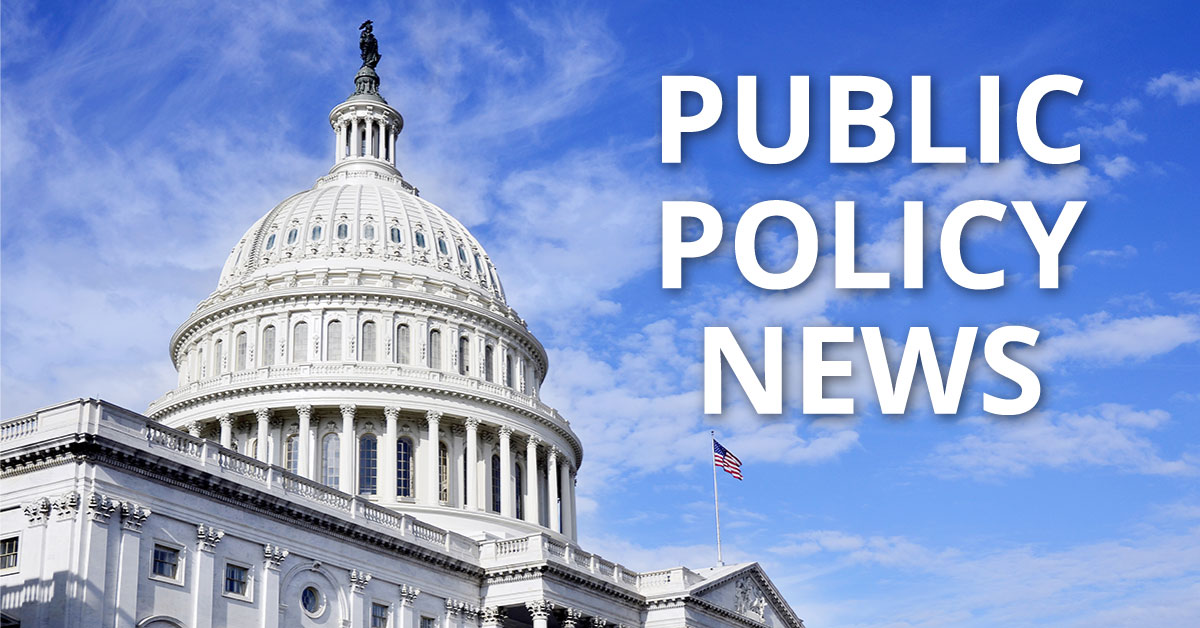
by CUPA-HR | March 20, 2025
On March 20, President Trump signed an executive order titled “Improving Education Outcomes by Empowering Parents, States, and Communities.” The order directs the secretary of education to “take all necessary steps to facilitate the closure of the Department of Education and return authority over education to the States and local communities while ensuring the effective and uninterrupted delivery of services, programs, and benefits on which Americans rely.”
The order additionally states that the secretary of education “shall ensure that the allocation of any Federal Department of Education funds is subject to rigorous compliance with Federal law and Administration policy.” According to the order, this includes compliance with federal requirements to terminate “illegal discrimination obscured under the label ‘diversity, equity, and inclusion’” and to terminate programs that promote gender ideology.
With respect to higher education, the executive order asserts that closure of the ED “would drastically improve program implementation.” It specifically discusses ED’s role in managing the federal student loan debt portfolio, and it claims that ED “is not a bank, and it must return bank functions to an entity equipped to serve America’s students.”
It is still unknown how Secretary McMahon will execute this order. Despite Trump’s clear intentions to close ED, Congress would still need to pass legislation to officially dissolve the department. It remains to be seen whether McMahon and the Trump administration will move ED’s subagencies and their functions to other federal agencies as speculated.
More information is needed from ED to understand how this order will be implemented. CUPA-HR will continue to monitor for additional news and guidance from ED as it relates to the order.
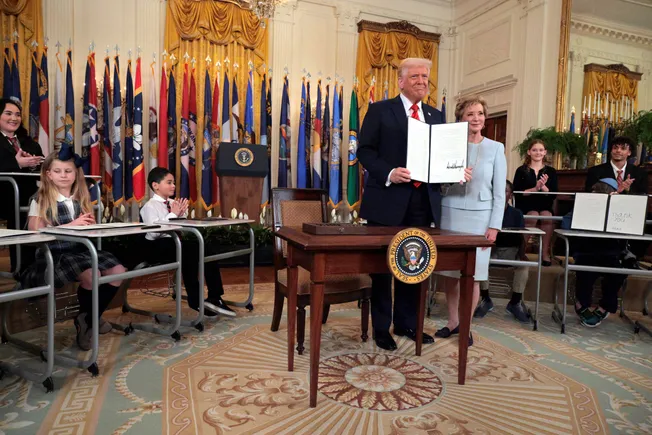
President Donald Trump on Thursday afternoon ordered U.S. Secretary of Education Linda McMahon to “take all necessary steps to facilitate the closure of the Department of Education,” marking the boldest push from the president to shut down the agency since its establishment under the Carter administration over four decades ago.
Trump also said prior to the signing that he intends to disperse the department’s core functions — such as Pell Grants, Title I funding, and providing funding and resources for students with disabilities — to other parts of the government.
“They’re going to be preserved in full and redistributed to various other agencies and departments that will take very good care of them,” he said. “My administration will take all lawful steps to shut down the department. We’re going to shut it down and shut it down as quickly as possible.”
“It’s doing us no good,” he added.
The directive was originally expected to be released earlier this month. It comes less than two weeks after the Trump administration, under Education Secretary Linda McMahon’s leadership, abruptly cut the department’s workforce by half, shuttered over half of its civil rights enforcement offices, and fired all but a handful of National Center for Education Statistics employees.
The layoffs preceding the Thursday order impacted nearly 1,300 workers in addition to the nearly 600 employees who accepted “buyouts.”
Trump has repeatedly and forcefully threatened to shut down the department since his first term in the White House, citing what he has called the agency’s “bloated budget” and a need to return education control to the states. His push to dismantle the department is in line with the 2024 Republican agenda, which included closing the department to “let the States run our educational system as it should be run.”
In a Thursday speech, just prior to signing the order, Trump also cited low student test scores as reason to close the department.
“After 45 years, the United States spends more money in education by far than any other country, and spends, likewise, by far, more money per pupil than any country,” he said. “But yet we rank near the bottom of the list in terms of success. That’s where we are — like it or not — and we’ve been there for a long time.”
Abolishing the 45-year-old agency altogether, however, requires a Senate supermajority of 60 votes. A similar proposal from conservatives in the House failed in 2023 when 60 House Republicans joined Democrats to defeat the measure.
Given the current closely divided Congress, many have considered it a longshot that lawmakers would approve the department’s demise.
However, in his Thursday speech, Trump said he hopes Democrats would be onboard if the legislation to officially close the department eventually comes before Congressional lawmakers.
Although the administration technically needs Congressional action to close the department, the Thursday order tells McMahon to push its closures “to the maximum extent appropriate and permitted by law.”
The agency is responsible for a slew of programs key to school and college operations, including conducting federal civil rights investigations, overseeing federal student financial aid, and enforcing regulations on Title IX and other education laws. It is in charge of large programs that schools depend on, like Title I, which sends aid to low-income school districts, and the Individuals with Disabilities Education Act that supports special education services.
Following the layoffs earlier this month, the department claimed its key functions, including overseeing COVID-19 pandemic relief, wouldn’t be impacted.
“Closing the Department does not mean cutting off funds from those who depend on them — we will continue to support K-12 students, students with special needs, college student borrowers, and others who rely on essential programs,” said McMahon in a statement praising the executive order on Thursday.
However, former employees and education policy experts have warned that a department functioning on only half its former manpower could lead to a decline in oversight, guidance and student protections while creating systemic “chaos.”
“Eliminating it would roll back decades of progress, leaving countless children behind in an education system that has historically failed the most marginalized,” said Keri Rodrigues, president of National Parents Union, in a Thursday statement responding to the order. “Without federal oversight, states will have free rein to lower standards, siphon funds from public schools, and dismantle hard-won civil rights protections.”
Educators have also warned that gutting the department would eventually lead to an increase in class sizes and reduce special education services for students with disabilities.
McMahon disagreed.
“Teachers will be unshackled from burdensome regulations and paperwork, empowering them to get back to teaching basic subjects,” she said in the statement. “Taxpayers will no longer be burdened with tens of billions of dollars of waste on progressive social experiments and obsolete programs,” she added.
During her Feb. 13 Senate confirmation hearing, McMahon did not commit to closing the Education Department and acknowledged that closure of the entire Education Department would need congressional approval. The White House echoed those sentiments on Thursday, just prior to the order’s signing.
McMahon also said programs established by federal statute, such as Title I for low-income schools and services to students with disabilities under the Individuals with Disabilities Education Act, would need to continue with or without an Education Department. But some federal education statutes are specific about certain offices’ responsibilities within the Education Department.
The Office of Special Education Programs, for example, is to be within the Office of Special Education and Rehabilitative Services in the Education Department, according to the IDEA.
Still, on McMahon’s first day on the job last month, she publicly said she was planning for the “historic overhaul” of the department as its “final mission.”
“This review of our programs is long overdue,” she wrote in a letter posted by the department that same night, supporting what she called “elimination of bureaucratic bloat here at the Department of Education — a momentous final mission — quickly and responsibly.” McMahon and Trump have touted giving education decision-making power back to the states and parents.
However, “This is not about cutting bureaucracy — it’s about gutting the protections that safeguard our children’s education,” Rodrigues said in her statement.
Democratic lawmakers have also resisted the department’s recent cuts and have already pushed back against the order that followed it today.
“President Trump’s executive order to dismantle the Department of Education (ED) and ‘return education to the states’ will be challenged in the Courts,” said Rep. Bobby Scott, D-Va., ranking member on the House Committee on Education and the Workforce.
Sen. Patty Murray of Washington, along with two other Democratic lawmakers, also demanded answers from the agency in a 10-page letter sent Monday, asking McMahon and Institute of Education Sciences Acting Director Matthew Soldner how the agency intends to fulfill its statutory obligations with a reduced staff.
Others are celebrating the historic order.
“With the federal government stepping back, the potential for new, transformative education models has never been greater,” said Jeanne Allen, founder and CEO of the Center for Education Reform, in a statement on Wednesday night in anticipation of today’s order. “As every great innovator knows – whether in education, business, or technology – government interference stifles progress and disruptive innovations accelerate it.”
Many Republican lawmakers are also on board with gutting the agency.
“The key to improving education is empowering parents and students and reducing the role of Washington bureaucrats,” said House Committee on Education and the Workforce Chair Tim Walberg, R-Mi., in a Thursday statement. Walberg cited the Biden administration’s decisions during the pandemic, slowed student performance in the wake of the crisis, and its LGTBQ+ inclusive policies as some reasons to cut the department.
“Bottom line, the Department of Education has failed to deliver results for America’s students and today’s actions by the Trump administration will help ensure our nation’s youth are put first.”